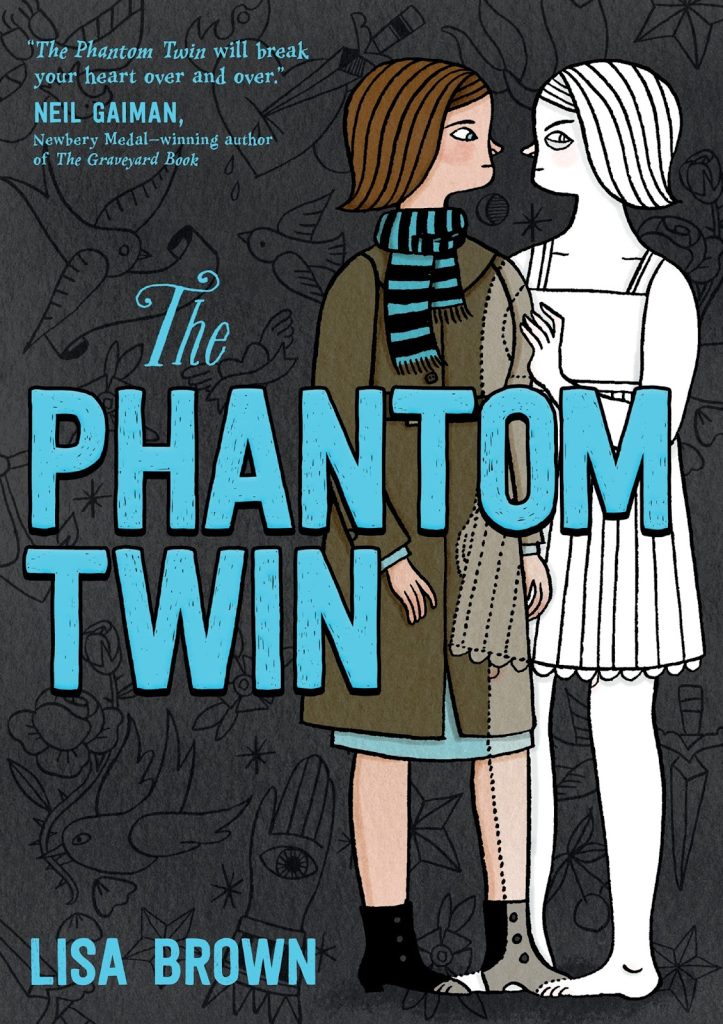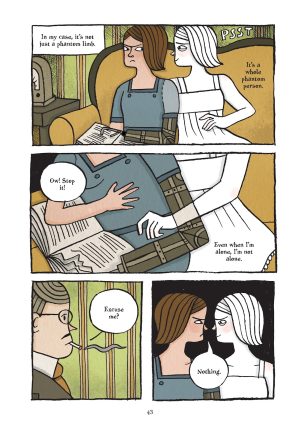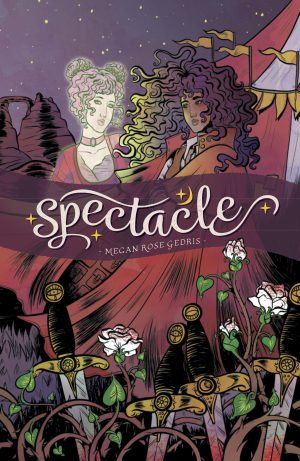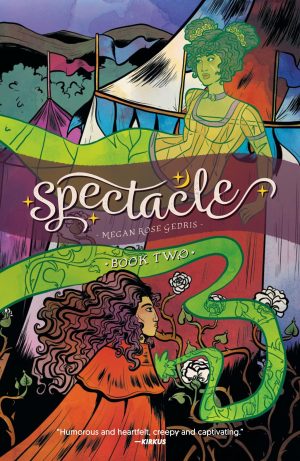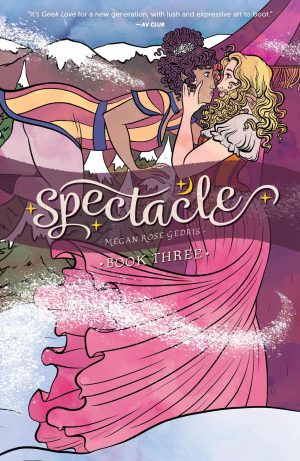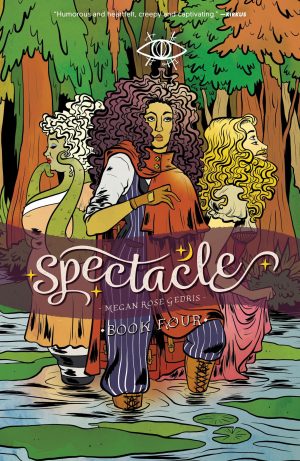Review by Ian Keogh
Isabel and Jane are conjoined twins earning a living in an early 20th century freak show when a surgeon approaches them convinced he can separate them, giving them individual lives despite a shared leg and arm. The operation doesn’t work. Isabel survives requiring prosthetic limbs, and is haunted by the ghost of her dead twin.
Lisa Brown spends a considerable time with the twins still conjoined to begin The Phantom Twin, showing their life before the operation, the friends they have and the pressures they’re under. As Jane controlled the middle limbs her presumption was that an operation would allow her a normal life, and her desires prove the motivating force for the unsuccessful treatment. She proves a jealous and negative ghost.
There’s something of Richard Sala’s heavy inks and flattened, stiff figures about Brown’s art, and on this outing at least a similar fascination with the gloomy areas separating life and death. Brown’s use of sideshow attractions is broadly sympathetic, but freak shows now occupy awkward ground. Human nature being what it is, there’s always a curiosity, yet exploitation was always part of the package, in Brown’s case represented by the callous sideshow owner. In a young adult graphic novel emphasising that different is okay is a lesson to be applied to wider life.
For all the good about this, though, and there being some truth to Neil Gaiman’s cover quote about breaking your heart, Brown is a ponderous storyteller. Everything is spelled out in great detail, and the mysteries aren’t ultimately satisfying enough to have been so prolonged. The fortune teller prophecies bad times coming at the carnival, and sure enough they arrive, but they don’t greatly resonate, and for a story titled The Phantom Twin, there’s very little development of Jane beyond a few scowling appearances and some clumsy foreshadowing.
In the end Brown opts for gothic melodrama and events take their course, but without generating the satisfaction the ingredients should.
